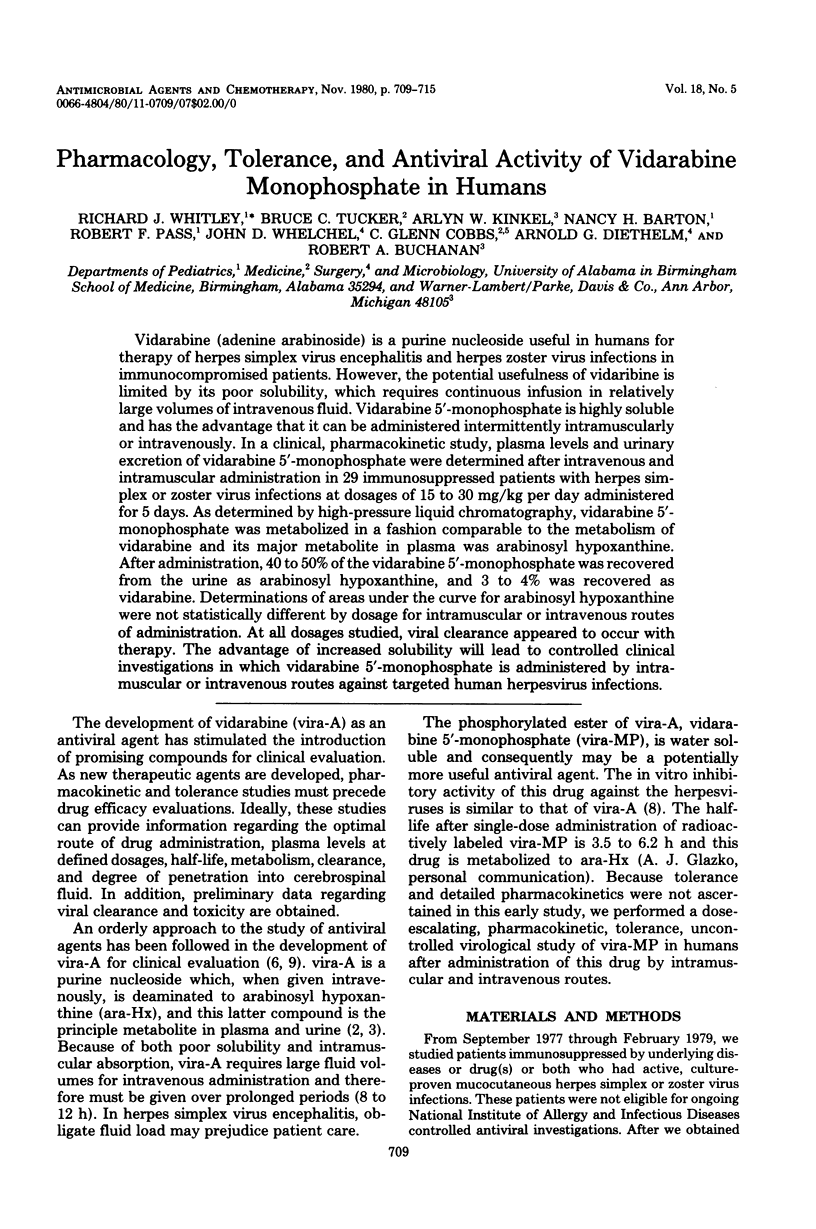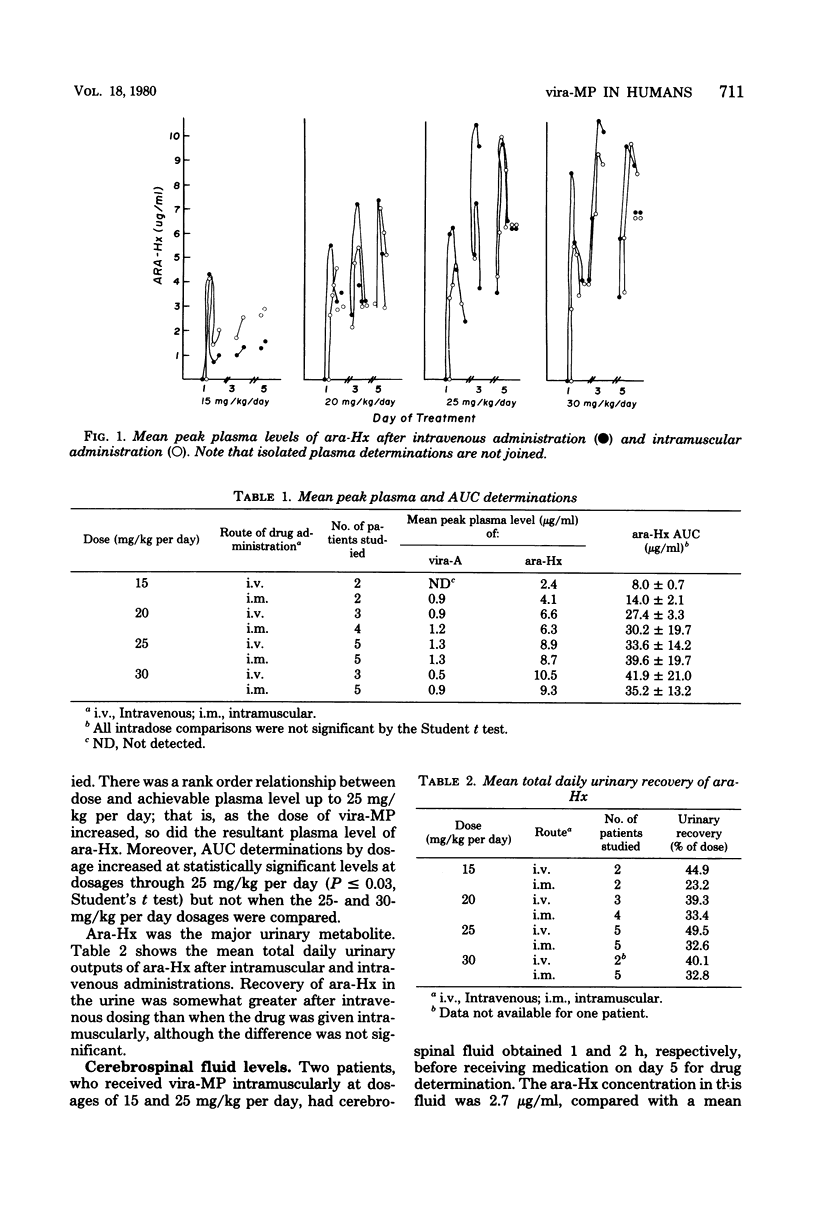Abstract
Vidarabine (adenine arabinoside) is a purine nucleoside useful in humans for therapy of herpes simplex virus encephalitis and herpes zoster virus infections in immunocompromised patients. However, the potential usefulness of vidaribine is limited by its poor solubility, which requires continuous infusion in relatively large volumes of intravenous fluid. Vidarabine 5′-monophosphate is highly soluble and has the advantage that it can be administered intermittently intramuscularly or intravenously. In a clinical, pharmacokinetic study, plasma levels and urinary excretion of vidarabine 5′-monophosphate were determined after intravenous and intramuscular administration in 29 immunosuppressed patients with herpes simplex or zoster virus infections at dosages of 15 to 30 mg/kg per day administered for 5 days. As determined by high-pressure liquid chromatography, vidarabine 5′-monophosphate was metabolized in a fashion comparable to the metabolism of vidarabine and its major metabolite in plasma was arabinosyl hypoxanthine. After administration, 40 to 50% of the vidarabine 5′-monophosphate was recovered from the urine as arabinosyl hypoxanthine, and 3 to 4% was recovered as vidarabine. Determinations of areas under the curve for arabinosyl hypoxanthine were not statistically different by dosage for intramuscular or intravenous routes of administration. At all dosages studied, viral clearance appeared to occur with therapy. The advantage of increased solubility will lead to controlled clinical investigations in which vidarabine 5′-monophosphate is administered by intramuscular or intravenous routes against targeted human herpesvirus infections.
Full text
PDF






Selected References
These references are in PubMed. This may not be the complete list of references from this article.
- Buchanan R. A., Kinkel A. W., Alford C. A., Jr, Whitley R. J. Plasma levels and urinary excretion of vidarabine after repeated dosing. Clin Pharmacol Ther. 1980 May;27(5):690–696. doi: 10.1038/clpt.1980.98. [DOI] [PubMed] [Google Scholar]
- Ch'ien L. T., Cannon N. J., Whitley R. J., Diethelm A. G., Dismukes W. E., Scott C. W., Buchanan R. A., Alford C. A., Jr Effect of adenine arabinoside on cytomegalovirus infections. J Infect Dis. 1974 Jul;130(1):32–39. doi: 10.1093/infdis/130.1.32. [DOI] [PubMed] [Google Scholar]
- Sacks S. L., Smith J. L., Pollard R. B., Sawhney V., Mahol A. S., Gregory P., Merigan T. C., Robinson W. S. Toxicity of vidarabine. JAMA. 1979 Jan 5;241(1):28–29. doi: 10.1001/jama.1979.03290270020010. [DOI] [PubMed] [Google Scholar]


